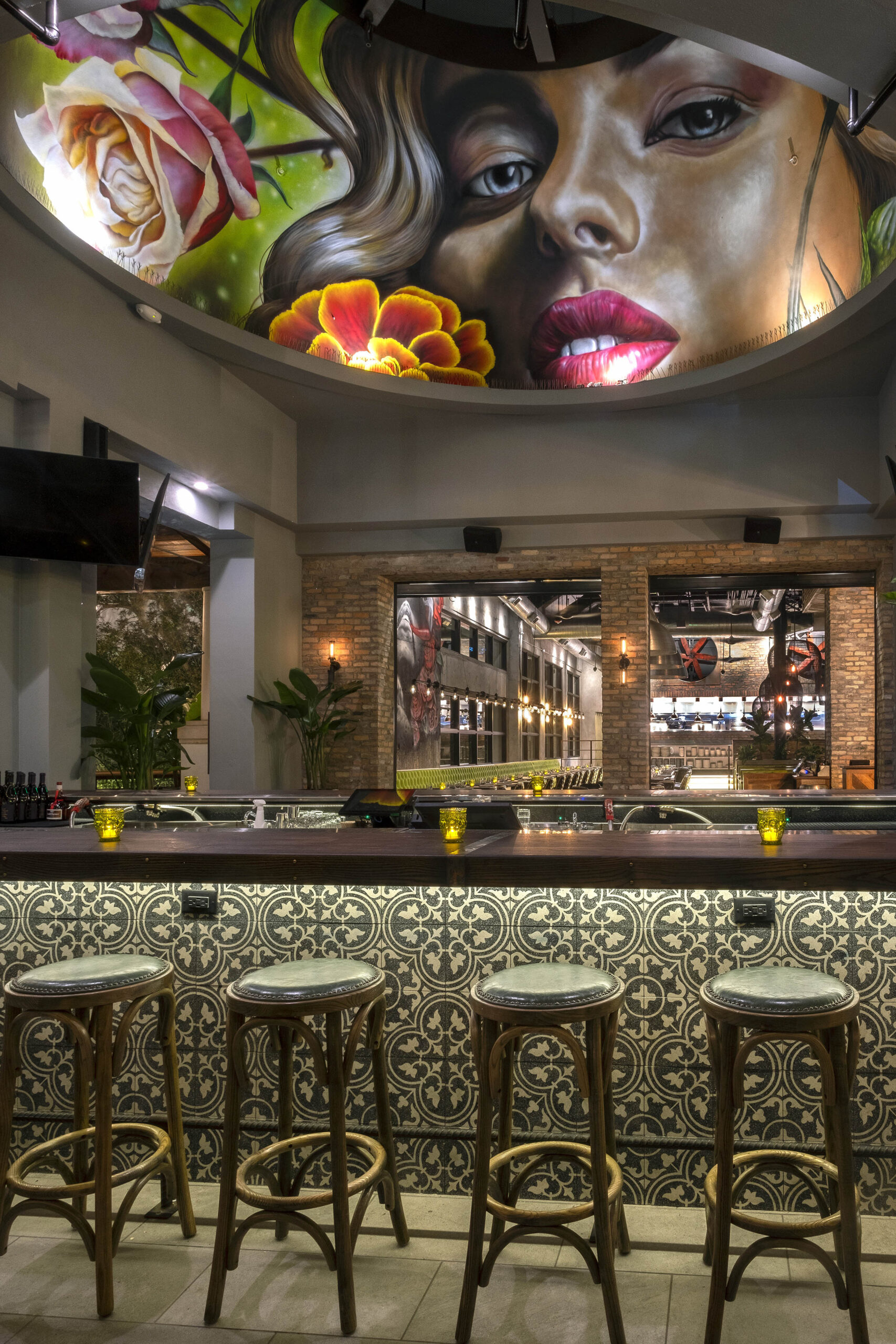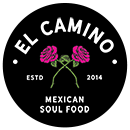
12 Sep Ruben Ubiera Murals to Enliven El Camino’s Upcoming Boca Restaurant
Known for his strong lines and graffiti-inspired works, including mixed media installations and urban murals, Miami artist Ruben Ubiera is creating a series of murals for “Mexican soul food” restaurant and mezcal & tequila bar El Camino’s upcoming Boca Raton location, opening this winter at PEBB Enterprises’ ambitious Restaurant Row development off Glades Road.
Ubiera already has his bold paintings displayed on the walls at El Camino West Palm Beach, which just opened in July, along with other El Camino locations and a number of businesses and public (legal) art spaces around South Florida.
Ruben Ubiera Explains His Style
The artist’s work falls under what he calls “Postgraffism,” a word he coined to describe the “natural evolution of urban art” where, unlike true graffiti, the focus shifts away from lettering typically used as “tags”. “Beauty, or the perception of beauty, changes with time. It evolves: We mature,” Ubiera says, explaining that today, “Concept and technique, (spray paint) can control, is what’s key.”
The use of a spray can a a custom tool of trade, he points out, “speaks volumes of how new and bold this movement is,” adding, “After all, the spray can is a product of the 20th-21st century. A true first real American-modern visual art movement — that is, if we don’t take into consideration the natives who inhabited the land before us.”
To put it more concisely, Ubiera says Postgraffism is the overall evolution of graffiti art that transcends the vandalism element that is so rooted in its past. “I have never really vandalized, but I grew up surrounded by vandals, studying what they were doing, being influenced by it, by its ‘do it yourself’ kind of attitude,” he explains, describing a childhood spent “devouring comics, animation, video-games and the like.”
Ubiera goes on to share what attracted him to graffiti and led to his work creating murals with spray pain, rather than classical oil or acrylics using brushes. “This is an art form that moves at the speed of today’s youth. Immediate, unapologetic. Full of color, life, fun and hope in the middle of urban decay and things gone wrong,” he says. “Marking, unapologetically, the fact that you existed and were part of this mess we call modern society. It’s a pure reflection of the soul of a city’s inhabitants.”
Of course one key element that sets Ubiera apart from many street artists — including much of what superstars like Banksy, KAWS, Barry McGee (Twist) and Shepard Fairey (of Obey/Giant fame) did to cut their teeth and earn recognition in their early years (and still do on occasion) — is being asked, and paid, to paint walls instead of breaking the law. And as more people see his work in places like El Camino, he’ll make more murals and word will continue to spread.
“My creative process is a very organic one. I sketch after having creative meetings with my clients. This could take a week, or a second: After all, how do you time a good idea?” he asks, pointing out that he’s constantly creating and coming up with ideas and concepts for new pieces. “I’m never too far from a good concept. The trick is persistence, discipline. I’m never inspired… but 10 minutes into a mural, you can’t pull me away. Inspiration must catch you working. Then it becomes unstoppable.”
When a restaurant or business hire Ubiera, he says he consults with them to find the right design for their space. “I sketch in front of my client to lock an idea out, from here, I calculate costs and production details. But my favorite is when I have carte blanche and I can just freestyle directly on the wall — that’s when true creativity happens, on the fly,” he says. “After all, necessity is the mother of creativity so I keep myself on the edge of knowing what I’m going to do, and a complete empty mind. I’m always pleased with the unexpected results.”
Designing El Camino
For the El Camino projects, Ubiera works with Pam Manhas, an interior designer from Fort Lauderdale who has her finger on the pulse of the local art scene, along with great instincts to know the right artists to bring in for whichever location she’s currently tackling. “We are so fortunate to have amazing artisans and artists on our creative team,” Manhas says, adding later, “Ruben Ubiera’s artwork is also an integral part of El Camino’s brand identity.”
She says Ubiera’s first murals for El Camino in Delray were “groundbreaking for the artistic movement” in that city. “His approach to the artwork for West Palm was a higher production value with more refined, elevated and detailed pieces,” she continues. “His artwork and his production techniques have developed over the course of El Camino’s evolution. Inspired by cultural references, he complemented the plaza’s floral theme while creating our own identity.”
“I’m hoping, that at a glance, the consumer realizes that this is a different, new, edgy and sexy place where they can have fun,” Ubiera says of the vision he and Manhas put together at the restaurant. “I want them to see that when it comes to fun in West Palm Beach, all roads lead to El Camino.”
El Camino is known for its traditional Mexican cooking methods, fresh ingredients and locally sourced produce in their dishes, while putting equal efforts into its beverage program. They offer a robust and curated menu of tequilas and mezcals, as well as cocktails, with a focus on the traditional margarita, and fresh-pressed juices.
For more information on El Camino, visit elcaminofla.com
Source:danspapers.com
By:Oliver Peterson

